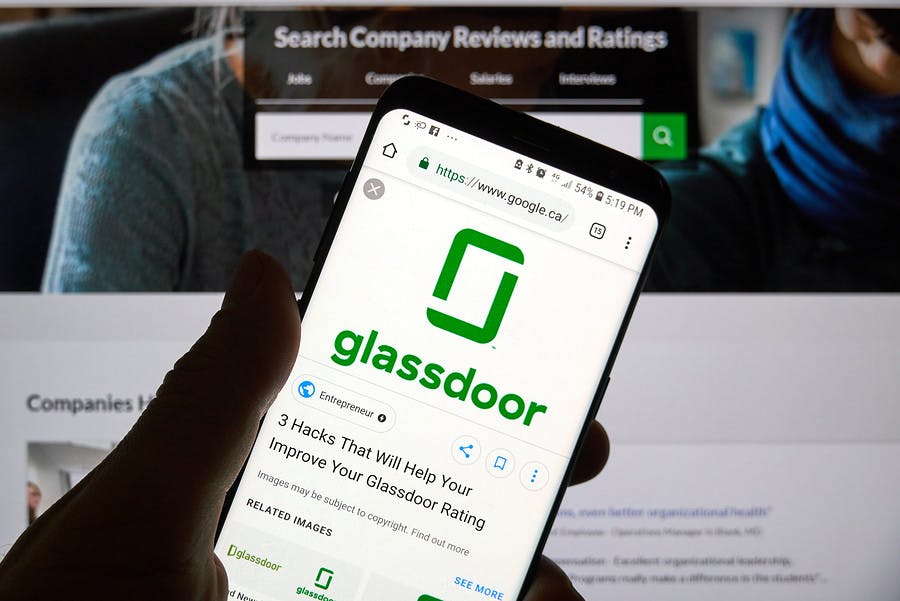With less reqs to fill right now, this is a good time to turn your attention to other ways to add value to hiring efforts. One of those is addressing your employer brand on Glassdoor. But I beg of you: Don’t do more harm than good.
So many companies make rookie errors when it comes to managing their Glassdoor efforts that I am inspired (at the risk of dating myself) to borrow a refrain from Jeff Foxworthy: “If you [fill in the blank], then you might be a redneck.” Only in this case, you might be a glassneck — someone who puts their employer brand in imminent danger of decapitation.
“Write a Review, Pretty Please, With a Cherry on Top!”
If you think that going person by person through an entire team asking people to write nice reviews won’t result in at least one scathing Glassdoor missive, then you might be a glassneck.
An overly aggressive approach can backfire when those who feel voluntold to write reviews act out by writing lousy ones. And if you really grind their gears by pushing too hard for unearned company praise, they may even taint other reviews in their invective by adopting the common Glassdoor trope that “all the positive reviews about this company are fake.”
“We Earned That Star!”
If you think that Glassdoor is like the Michelin restaurant rating system where getting even one star is a very good thing, then you might be a glassneck.
Even in a job market disrupted by COVID-19, the best talent will have career choices. The average Glassdoor score is 3.3 out of 5.0, but discerning talent won’t settle for average. Many will simply not engage with a company that doesn’t have a Glassdoor score above a certain threshold, e.g., an overall score of 4.0.
“Look How Much We Care!”
If you think that a company response written by the social media intern is an awesome way to impress employees and candidates alike, then you might be a glassneck.
When you attempt to show that you care by responding online to employee reviews, show that you actually care by having the person who could impact employee experience be the one to respond. For example, a software engineer expressing concerns in a Glassdoor review about some engineering issue will likely not want to hear from PR (just spin), HR (no clue what the work is), or even the CEO (too high up; reply may come off contrived). A humble, solution-oriented response from the VP of engineering or another leader who understands the matter would be much more likely to scratch the itch.
“A 55% Majority of Reviewers Approval of Our CEO!”
If your CEO takes solace in the fact that a mere majority of people gave a thumbs up on his or her performance, then your chief executive might be a glassneck.
Every CEO on Glassdoor’s Top CEOs of 2019 list of U.S. companies with more than 1,000 employees had at least a 90% approval rating, and at small and medium-sized organizations, a 97% approval rating. If your CEO has a seemingly undeserved low rating, perhaps it’s time to have the individual step into the spotlight on cultural initiatives and internal communications. On the other hand, if the low score is an accurate reflection of performance, you may have to face facts that this leader is going to be a drag on your efforts to get a higher overall company score.
“This Is Beyond Our Control!”
If you think that there’s little you can do to influence your scores, then you might be a glassneck.
Your organization has an employer brand, regardless of whether you proactively cultivate it. And you should proactively cultivate it. There’s plenty you can do, even with the basic free account, to improve your brand.
For example, you can add company updates regularly so that people following your company will see a message of your choosing when they receive new-activity emails from Glassdoor. Also, if you have internal engagement survey data that suggests greater engagement and satisfaction than Glassdoor suggests, show your employees the data and gently ask your people to tell their (presumably positive) stories. To avoid having this backfire on you (see above), the key is not to make employees feel coerced and not to tell them what to say. Over time, this should fix any incorrect picture of your culture.
Now get out there and do your company proud!
